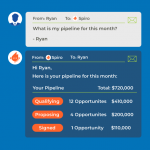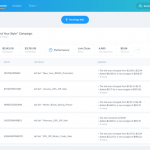AI Yenta: It Matches Your Press Release To The Journalists Who’ll Want It
by Mike Azzara, December 1, 2016
If there are roughly 400,000 journalists, bloggers, and other potential influencers publishing in the English-speaking world, wouldn’t it be great if you could send that press release about your lovingly brewed craft beer only to those who actually cared?
After all, the current approach of carpet-bombing as many as you can find is costly and inefficient. And — speaking as a former reporter, bureau chief, news editor, managing editor and editor-in-chief — receiving irrelevant releases really, really annoys the very folks whose favor you’re looking to curry.
Last week, I learned of a U.K. start-up using AI machine learning technology to solve this problem. Trimaldi Ltd., just shy of nine months old, recently announced an AI-backed press release distribution service that uses machine learning algorithms to send a marketer’s release only to those who really care.
Earlier this week, Trimaldi founder Stuart Fieldhouse explained it to me this way: His PressHalo service has a giant AI eye-in-the-sky that continuously monitors the global news stream and learns which writers care about what topics, and how that changes from day-to-day. Then, when a client comes along with a press release, PressHalo distributes it to those whom its algorithm expects actually will get all hot and bothered about it. And then it continues to do so over time, as its constant monitoring and AI brain uncover additional potentially interested journalists.
The proof in the pudding: PressHalo sent Trimaldi’s PressHalo release to MediaPost EIC Joe Mandese, who promptly forwarded it to me with this note: “There could be a fun column derived from receiving a press release from a company that is using AI to optimize press releases.” You bet there is! What’s more, Joe and I actually care about AI that makes marketing better; we both love the recursivity of the situation, and we believe our readers should care about both those things, too.
Fieldhouse, also a former journalist who covered financial services (including six years for the Financial Times), says the machine learning algorithms behind PressHalo began life in the hedge fund market. They were created by folks Fieldhouse knows from his days covering that beat. Naturally enough, Trimaldi’s first product, IR Halo, targets asset fund managers. IR Halo uses the same AI algorithms as PressHalo, but to help fund managers assess their competition and their position within that competitive universe.
Fieldhouse says that, as a former journalist himself, he saw the potential for a more efficient information distribution service with high potential engagement rates. Trimaldi has spent the last nine months amassing a database of roughly 400,000 English writers around the world, using natural language processing and deep learning to produce a semantic representation of the content it finds. In other words, it self-organizes the classification of topics that everyone is writing about, but in ways that the machine can understand and use. It then “enriches” the content “with other details from our curated digital knowledge bases,” Fieldhouse says.
When a marketer distributes through PressHalo, the AI’s natural processing algorithms analyze the release and then match the results against its writer database to find those writers whose content output suggests they’d welcome the news. Fieldhouse notes that while the database contains email addresses for lots of writers, “It’s also smart enough that if it doesn’t have the contact information of an individual journalist, it can associate that writer with the general address of the publication.”
Fieldhouse points out that no two press releases will have the same distribution. “The distribution pattern for this week will be different than next week, depending on the changing dynamics of what journalists are writing about, and on the content of the release.” Marketers can upload their release and get an analysis of its “newsworthiness,” or expected uptake, he said.
Pricing is simple: Like any self-respecting modern marketer of software or SaaS, the first taste is free. After that, PressHalo costs £350 per release — which, at the moment I wrote this sentence, was worth $437.52. Fieldhouse likes the simple per-release pricing approach, particularly for smaller companies that won’t put out a lot of releases. The way the technology works, the system learns over time, and each individual release gets the best result available at the moment it’s sent.
Coincidentally, this is not my first experience with this type of technology, having done consulting for a content AI company named mSpoke that was acquired by LinkedIn in 2010. Aimed at publishers, it analyzed the content site visitors read and then offered each visitor content ideally matched to him or her.
I refrained from asking Fieldhouse if his AI brain, too, worked by representing articles as vectors through an n-dimensional hypersphere, because I only really understood that for about 30 minutes right after the mSpoke techs explained it. Also coincidental: The first commercial use of mSpoke’s tech was for financial services.
But you have to ask yourself, are these really coincidences? Or did the PressHalo AI know it all along?
MediaPost.com: Search Marketing Daily
(16)














